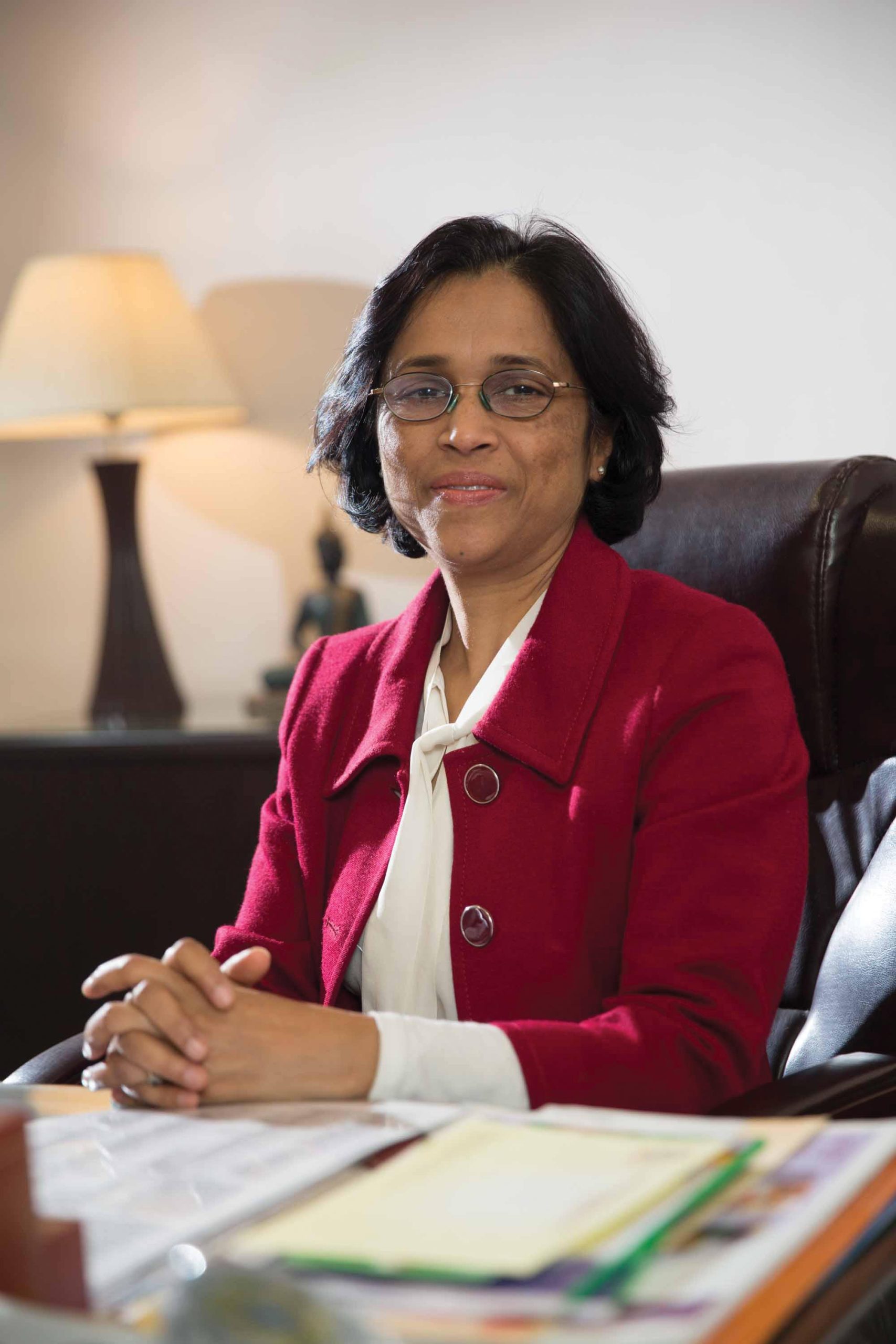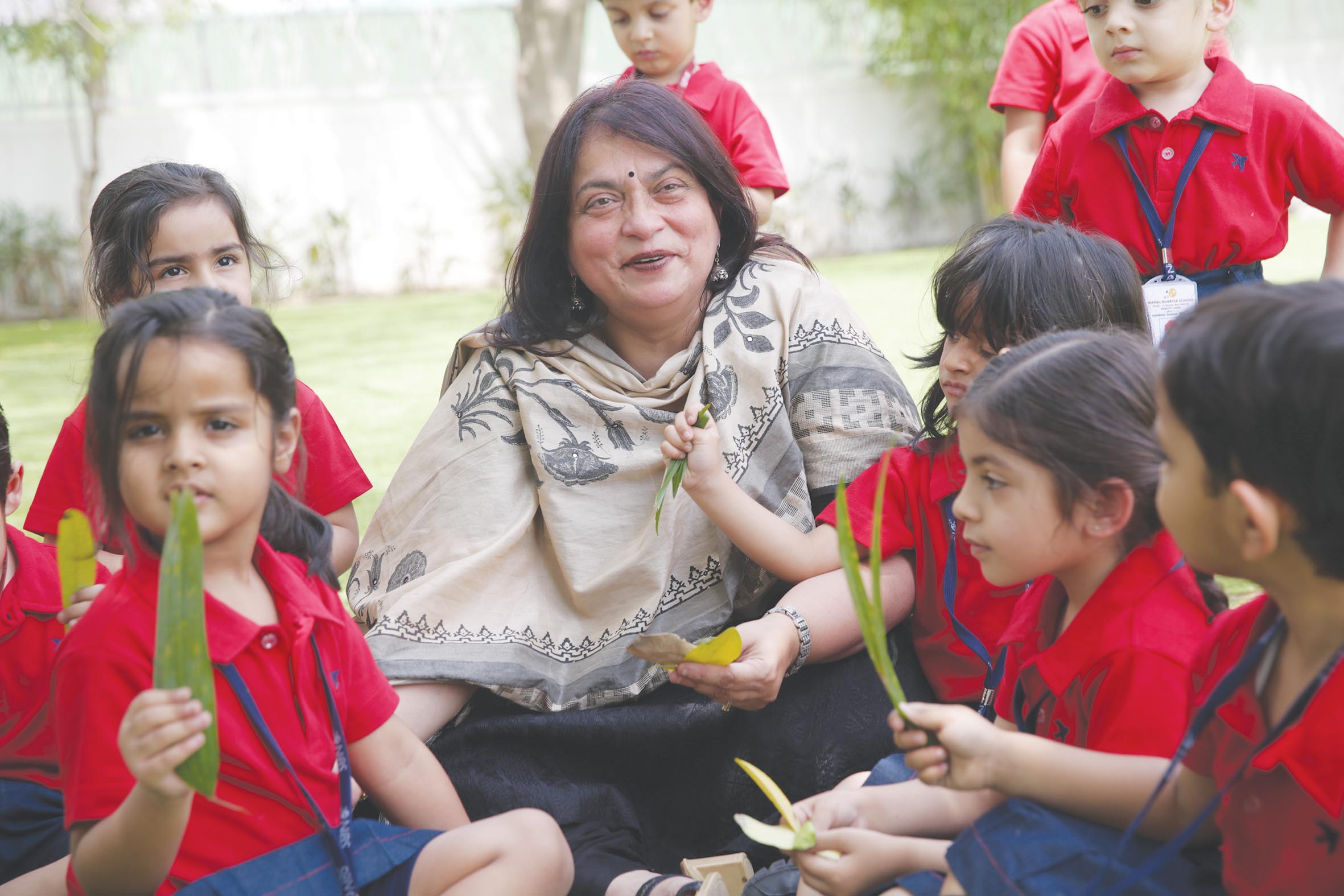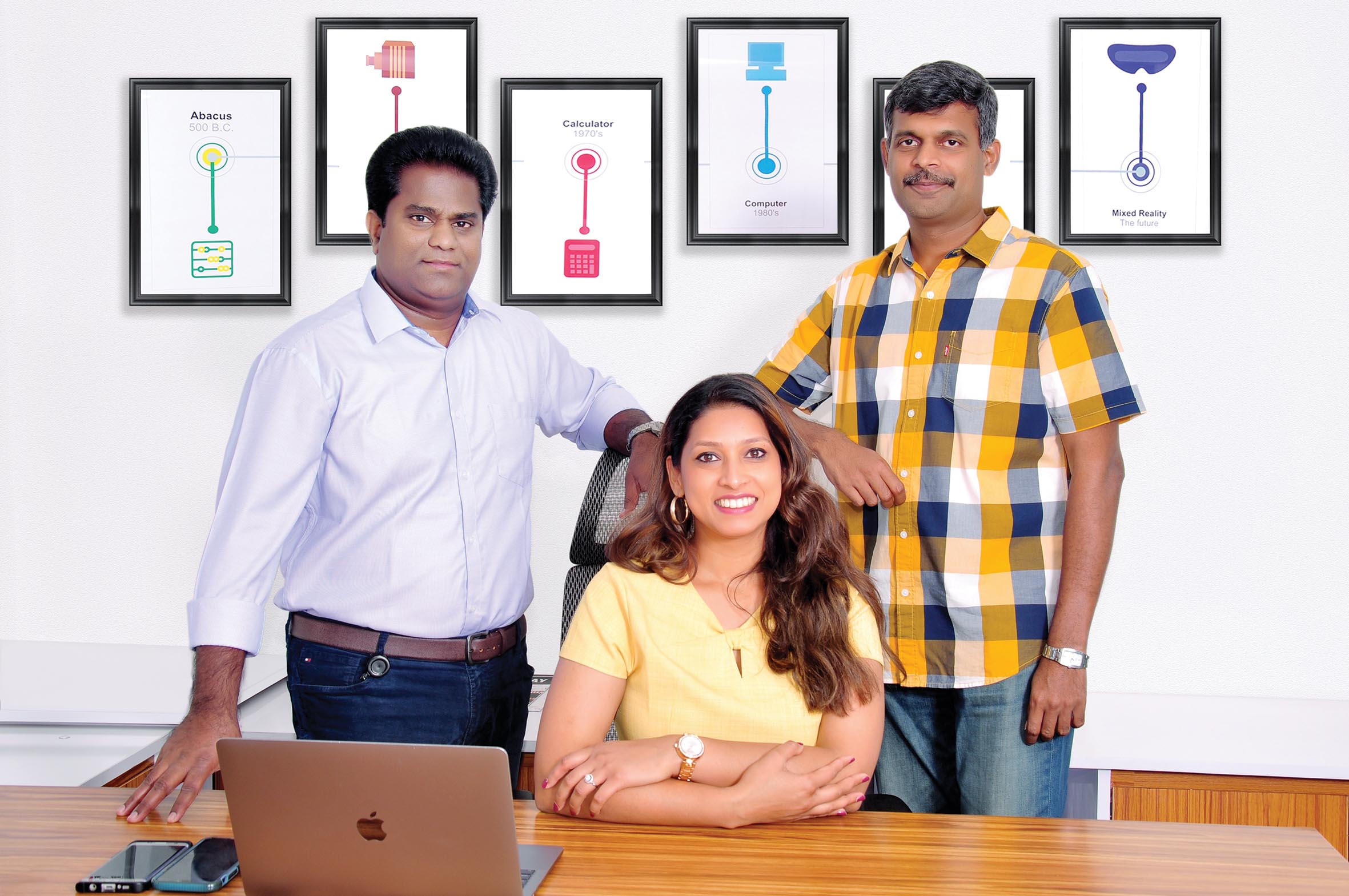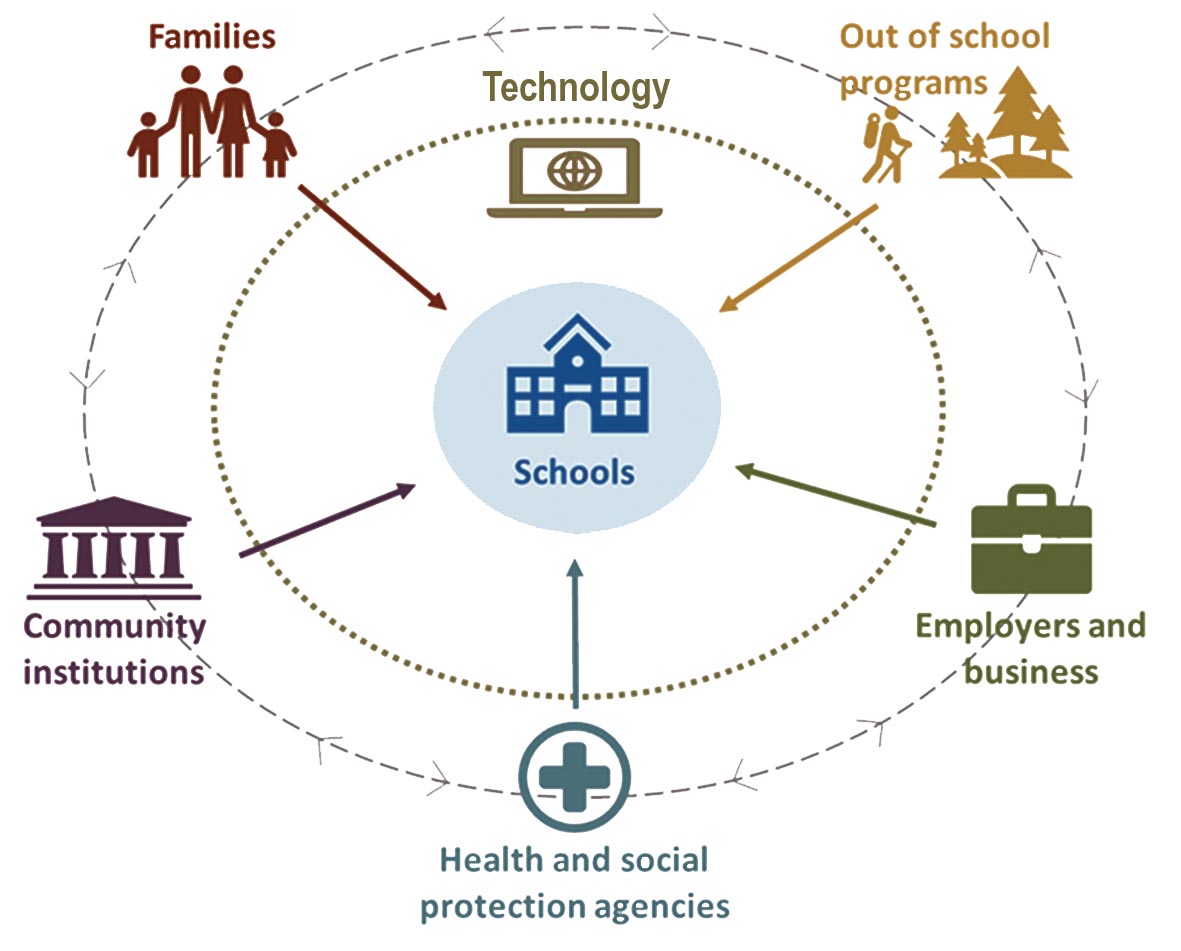The malignant winds that have blown the Coronavirus over the Indian polity devastating industry and business, have also blown some good. They have thrust adoption and adaptation of new digitally-enabled techonologies into the country’s reluctant classrooms – Dilip Thakore

Two facets of Indian education: Covid-19 pandemic exposes deep digital learning inequality
Although infection rates and fatalities caused by the Coronavirus pandemic are on the downswing in India — possibly because of higher in-built immunity to disease of citizens of a polity in which for several decades government expenditure on public health averaged less than 1.5 percent — the socio-economic damage caused by the deadly virus has been enormous and under-reported.
Even as the Union Budget 2021-22, which is scheduled to be presented to Parliament and the people on February 1, is being given its final touches, it’s clear that GDP, which was expected to increase by a modest 5 percent in fiscal 2020-21, will contract by 7.7 percent according to a National Statistical Office (NSO) forecast. Moreover, the unprecedented pandemic has increased unemployment from the normative 4-5 percent to 7.8 percent of the national workforce, and the number of unemployed is likely to rise to 37 million disrupting the lives and livelihoods of an estimated 100 million households across the country.
Yet perhaps the most devastating impact of the lethal virus has been on India’s under-funded and under-serviced pre-primary to Ph D education institutions. The country’s estimated 300,000 preschools, 1.60 million K-12 schools, 39,931 colleges and 1,008 universities have been shuttered since March 25 when the Central government ordered the world’s most stringent national lockdown of all industry, businesses and education institutions at four hours notice. Since then, over 300 million children and youth have been restricted to learning best as they can from their homes across the country. Although a small number of top-ranked education institutions have managed to make a smooth switch to new digital technologies- enabled teaching-learning, the vast majority of education institutions — especially the country’s 1.20 million government schools — have failed to maintain learning continuity.
According to the National Sample Survey 2017-2018, a mere 8 percent of Indian households with children and youth aged between five and 24 years have access to the Internet and computer devices (desktop, laptop, tablet, etc). Moreover, with an estimated 18 million people having lost their livelihoods during the past six months, 24 percent of Indian households that own smartphones are unable to afford Internet charges for children’s online classes.
Typically, the reaction of the Central and state governments to the ominous pandemic cloud looming over the world’s largest — and high-potential — child and youth population has been lethargic and negligent. The plain truth as reiterated ad nauseam by your editors with a mountain of data, is that neither India’s neta-babu brotherhood which has micro-managed the low growth Indian economy for seven decades, nor the middle class establishment, has sufficiently grasped the intimate connection between universal high-quality education and national development. This is conclusively evidenced by the failure of successive governments at the Centre and in the states to increase the annual national outlay for public education to 6 percent of GDP as first recommended by the Kothari Commission in 1967, and by several officially appointed committees and commissions since.
Moreover since 2004, the globally respected, Mumbai-based Pratham Education Foundation (estb.1994) which publishes its authoritative Annual Status of Education Report based on field testing of children in rural India, has been highlighting that reading, writing and math learning outcomes in rural primaries — especially in 1.20 million government schools — are going from bad to worse. To no avail. Not only is the annual outlay (Centre plus states) for public education (of which 40 percent is expended on over-subsidised higher education) stuck in the 3.3.25 percent of GDP groove, the neta-babu brotherhood is pulling out all stops to discourage the promotion of private schools.
This unholy nexus is hell-bent on forcing the closure of the country’s unique 400,000 budget private schools (BPS) which have emerged as viable alternatives to dysfunctional government schools defined by crumbling infrastructure, poor sanitation, chronic teacher absenteeism, rock-bottom learning outcomes and English language aversion. Under s. 19 of the landmark Right of Children to Free & Compulsory Education (RTE) Act, 2009, impossibly onerous infrastructure and teacher-pupil norms have been made mandatory for BPS on pain of heavy fines and forced closure. Brazenly, government schools are exempt from adhering to s.19 norms.
In sum, Indian education from pre-primary to Ph D — not one of India’s 1,008 universities some of whom are of over 150 years vintage, is ranked among the Top 200 in the annual WUR (World University Rankings) league tables of QS or Times Higher Education, the highly-reputed London-based agencies which rate and rank 3,000 universities globally — was already backward when the Coronavirus rapidly spread around the world and forced closure of all education institutions across the spectrum for over nine months. Now there is clear and present danger that the already shaky education of the vast majority of India’s children, especially 140 million children struggling in under-provisioned government schools, will suffer severe loss of learning continuity and drop out to join the unskilled labour force and add to the country’s widening pool of unemployed adults.
Inevitably the malignant winds that have blown the Coronavirus over the Indian polity which was already experiencing decelerating economic growth last March, have also blown some good. They have thrust adoption and adaptation of new IT-enabled digital education technologies into the country’s reluctant classrooms. Revolutionary information technologies made their debut in Indian industry over three decades ago and several Indian companies such as TCS, Infosys, HCL and NIIT have become highly competitive global brands. Even government ministries and departments have gone digital. However the country’s education institutions, especially in the K-12 segment, have been slow to warm to the IT revolution which has transformed teaching-learning processes and systems around the world.
Surprisingly the Covid-19 pandemic which without warning forced the shutdown of all education institutions countrywide since mid-March, has provoked a spirited positive response from the country’s estimated 9 million school teachers community. Across the country, institutional managements and teachers, especially of 450,000 private schools which host 47.5 percent of in-school children, have responded with alacrity to new digital information communication technologies (ICT) to maintain learning continuity of their students. Almost every private school — including the majority of low-price budget private schools — is reporting that it has successfully installed learning apps to teach children online for at least few hours daily.
Certainly all 2,500 primary-secondary schools included in the EducationWorld India School Rankings 2020-21 league tables (see EW November & December editions) have smoothly transitioned to virtual teaching-learning pedagogies with some expecting better board exam results in 2021 than in the previous year.
Although the number of schools included in the annual EWISR — the world’s largest schools rankings project (estb.2007) — is relatively small, these role model schools have a powerful demonstration effect countrywide. Therefore they have created national awareness of the importance of introducing new digital technologies into the country’s classrooms.

Geeta Kingdon: Heavy pressure forecast
“The silver lining of the unprecedented Covid-19 pandemic which has taken a terrible toll in terms of loss of economic growth and livelihoods is that radical digital technologies-driven pedagogies, which otherwise would have taken two decades, have been forced into classrooms. Learning apps such as Mentimeter, Geogebra, Kahoot etc enable instant measurement of students’ learning outcomes, and immediate feedback empowers children and makes the learning process more engaging for them. Although there is the hard reality of a digital divide between the upper and middle class children and the rest, there will be heavy pressure from below for the Central and state governments to replicate the digital education provided in private institutions in government schools. The new blended learning revolution in Indian education is here to stay,” says Prof. Geeta Kingdon, chair of education development economics at University College, London and president of City Montessori School, Lucknow, ranked the #1 co-ed day school in Uttar Pradesh (pop. 215 million) in EWISR 2020-21.
Undoubtedly, the country’s 2,500-3,000 mainly private schools with good leadership and resources rated and ranked in the EWISR 2020-21 have responded to the Covid-19 pandemic with exemplary speed and efficiency. Promoters and principals of all of them — including top-ranked low-fee budget private schools — claim to have smoothly shifted online to maintain learning continuity. In particular there is high praise for their teachers and staff for ready acceptance of digital pedagogies and training.

Wahi: Improved learning expectation
“Our teachers have responded courageously and magnificently to the totally unexpected lockdown order. They enthusiastically signed up for a three-week digital tech learning programme followed by periodic in-service workshops. By quickly becoming familiar with and utilising platforms such as Zoom, Google Classroom, Seesaw and several apps and videos, they have continued the academic and co-curricular education of our children. I am quite sure that in the CBSE school-leaving class XII exam, our students will maintain their average score of 2020, if not improve upon it,” says Charu Wahi, principal of Nirmal Bhartia School, Delhi (NiBS, estb.2006) which has 1,100 students mentored by 105 teachers on its muster rolls. This expectation is quite possible because in EWISR 2020-21, NiBS is ranked #1 on the parameter of curriculum and pedagogy (digital readiness), across all day schools (co-ed, day-cum-boarding, boys and girls) countrywide.

Gen. Ray: forced induction
Belief that the Covid-19 pandemic threat offers an opportunity to leapfrog India’s moribund school education system into the 21st century digital age is spreading across the country. “The pandemic has provided a sneak preview of what the future of learning is likely to be. There are two probabilities: in the near-term, education will be blended; in the long-term, children will be taught by human and AI teachers collaboratively to re-skill and re-invent themselves continuously through their lifetimes. The pandemic has forced the induction of online technologies into K-12 education which we believe will improve rather than disrupt the learning outcomes of children. In our Indus International Schools in Bangalore, Hyderabad and Pune we have whole-heartedly adopted advanced ICT, robotics and AI to deliver remote education to our students, and our internal online summative and formative examinations indicate that children’s academic engagement and learning are improving. Therefore I am confident that the average score of our students who write the IB Diploma exam in 2021 will be better than in the recently concluded year,” says Lt. Gen (Retd.) Arjun Ray, director and CEO of the IB (Geneva)-affiliated Indus International Schools and Indus Trust (estb.2001). In EWISR 2020-21, IIS-Bangalore was voted India’s #1 international day-cum-boarding school for the ninth year in succession and IIS-Pune and IIS-Hyderabad among the Top 10.
Within India’s multiplying number of avant-garde tech-friendly schools, this is not a minority opinion. Manit Jain, an alum of Harvard School of Education and promoter-principal of the Heritage Xperiential School, Gurugram (estb.2003) — ranked India’s #1 co-ed day school in EWISR 2020-21 — also believes that the pandemic lockdown has presented an excellent opportunity to reform and contemporise K-12 education.

Jain: bootcamp tech adoption
“Necessity is the mother of invention. Never in living memory has the accuracy of this observation been as well demonstrated as in India’s healthcare and education sectors during the past nine lockdown months. Many schools have adapted to this adversity with great resilience and ensured that children’s loss of learning has been mitigated to the maximum extent, regardless of context and resource constraints. Bootcamp technology adoption has risen to levels we couldn’t have hoped for in five years. While this augurs well for both students and educators, the challenge will be to sustain the momentum after conventional in-school classes begin. Teachers have tasted success and now it is a matter of discerning which type of blended learning model is appropriate for what needs. But I am confident we won’t revert to the old normal,” says Jain.
More than day schools, the nine-month lockdown of education institutions has hit boarding schools hardest. That’s because shared learning, playing and living experiences are the raison d’etre of residential schools.
Even so Dr. Jagpreet Singh, the newly appointed headmaster of The Doon School, Dehradun (TDS, estb.1935), routinely ranked India’s #1 boys boarding school in the annual EWISR — except in 2020-21 — believes that the unprecedented Coronavirus pandemic may well prove to be a blessing in disguise for K-12 education in India.
“Ironically it took a pandemic to shake education institutions out of their obstinate dependence on conventional classroom pedagogies. Although a small minority of schools across the country, including TDS, have been amalgamating online-offline teaching-learning for quite some time now, the pandemic has accelerated and further cemented the newly-emergent concept of hybrid learning which is not confined within four classroom walls. Nevertheless, I believe that staff and students of boarding schools have borne the brunt of the prolonged lockdown of education institutions. In residential schools where life revolves around students on campus, hostels wear a deserted look and staff miss their actual and extended families. Learning has definitely changed for our students since tutorials, remedial classes, sports, late night theatre rehearsals are suspended. However, our teachers have responded innovatively to this challenge and apart from conducting online academic classes, they are also orchestrating numerous co-curricular and extra-curricular activities online to continue with the holistic traditions for which this school is famous,” says Dr. Singh, an alumnus of Maharshi Dayanand Saraswati University, Ajmer, former TDS teacher and hitherto principal of the Punjab Public School, Nabha, the state’s #1 co-ed boarding school, who was appointed principal of TDS early last year

Raj Kumar: balance maintenance warning
Although students in higher education tend to be more digitally literate than school children and therefore are less bowled over by the online learning revolution which has injected video supplemented lessons, augmented and virtual reality immersive learning into dull K-12 classrooms, Dr. C. Raj Kumar, the erudite (Delhi, Oxford, Harvard alum) founding chancellor of the fast track O.P. Jindal Global University, Sonipat (estb.2009), ranked India’s #1 private university by QS, the highly reputed London-based publisher of the annual World University Rankings 2021, welcomes the dawn of the new age hybrid teaching-learning model. However, he warns against the balance of hybrid technology-driven education tilting towards remote online learning.
“While new technologies-driven online learning is critical in higher education, the intellectual growth of students, especially during undergraduate years is heavily dependent upon teacher-student exchanges, classroom bonding, post-classroom interaction and extra-curricular activities. The objective of undergrad education is not mere academic excellence but for students to evolve into well-rounded responsible citizens and leaders. Therefore, although online learning modules confer benefits such as data analytics to drive better output, accessibility, and efficiency, they limit holistic evolution of students. Although we appreciate the benefits of hybrid learning, it will always be only an add-on to classroom interaction,” says Raj Kumar.
However, it’s important to note that the smooth, successful transition of relatively upscale schools and higher education institutions to online learning which has generated great excitement and euphoria within academia and the middle and upper classes, has highlighted the huge ‘digital divide’ within contemporary India.
Although it can be safely assumed that the country’s top 2,500-3,000 primary-secondary schools rated and ranked in the annual EducationWorld India School Rankings have made successful transition to virtual teaching-learning, the vast majority of 1.5 million under-funded and under-serviced schools — especially the overwhelming majority of 1.20 million government schools — have missed the digital learning bus. Twenty-first century India’s well-documented electricity, Internet connectivity and per capita income deficits have had the impact of denying most of the rural population the proven benefits of digital and online learning.
But wait. Green shoots of hope are discernible. A new generation of edtech entrepreneurs have designed/invented a slew of innovative online learning platforms, apps and services for education institutions. In recent times dozens of mind-boggling edtech products and services have diminished the importance of the daily commute to school and conventional classrooms in which the dread virus may be lurking or transmitted. Together, these technology innovations have served to irreversibly change Indian education for the better.
Consequently, at least in the majority of the country’s 450,000 private schools which mentor 47.5 percent (119 million) of in-school children and where education is taken seriously, the chances of a reversion to the “old normal” is ruled out because tech-savvy edupreneurs are flooding the market with innovative digital teaching-learning products and services at increasingly affordable prices. This has ensured that the blended learning model — a combination of digital and face-to-face teaching-learning — will soon be available to all, including government schools.

Divya Lal: irreversible change
“Although it’s true that the pandemic and prolonged lockdown of schools has posed new unprecedented challenges for educators, parents and students, it has also opened up new opportunities that could redefine learning. The evolving education landscape enables a more elastic understanding of how to walk the tightrope between online and offline learning. Quite unexpectedly, teachers in classrooms have proved to be eager to learn to distribute education through new technologies that can liberate learners from the clutches of obsolete traditional pedagogies. The beneficial outcome of these troubled pandemic times is that change driven by the flexibility, versatility and economies of digital education seems irreversible,” says Divya Lal, managing director of Fliplearn Education Pvt. Ltd, a Delhi-based LMS (learning management solutions) company which stepped up to the plate after the national lockdown to provide 300 schools with 15,000 teachers and 300,000 students comprehensive, curriculum-mapped virtual learning programmes integrating high-quality content, assessment and feedback, live online classes and dashboards to track students’ learning progression.
The huge business opportunity offered by 21st century India’s massive K-12 education market comprising 1.50 million schools, including 450,000 private schools, still overwhelmingly mired in the chalk-n-talk teaching-learning era, has also aroused the interest of Indian origin edupreneurs abroad. This interest has been sharpened by the newly emergent national consensus that Indian education — especially the K-12 sector — needs to be dragged, even if kicking and screaming, into the digital age.

(L-R) Siddabatulla, Noheria & Thulasanami: unique business model
This awareness prompted three US-based tech-savvy edupreneurs — Subbarao Siddabatulla, an alum of Andhra University and IIM-A, Charu Noheria (R.V. College, Bangalore and University of Illinois) and Ilangovel Thulasanami (Andhra University and 20 years in SaaS industry) to promote the Hyderabad-based 3rd Flix Visual Effects Pvt. Ltd in 2018. The company has since developed a unique teaching-learning app christened Practically which provides “intelligent, interactive and immersive” STEM (science, technology, engineering and maths) education to classes VI-XII teachers and students. Within two years of launch the company claims to have reached 300,000 students of whom 30,000 have signed up for its learning from-home tutorials.
“We offer free-of-charge access to Cloud-based tool kits comprising over 3,000 videos and 1,000 AR simulations to registered schools for classes VI-XII STEM subject teachers to make their lessons enjoyable and engaging for students. Subsequently parents/students who find them sufficiently interesting and enabling may sign up with us for supplementary online tutorials on any STEM subject priced at Rs.1,300 per month for five hours and Rs.3,000 for 20 hours per month. Under this unique business model, we have already registered 130 schools in the Middle East and India,” says Noheria.
Also read: How ed-tech is changing the game for vernacular learning
Curiously despite considerable excitement being generated in the country’s 450,000 private schools about the digitally driven online learning revolution and numerous new tech platforms, apps and services flooding the marketplace, there’s little concern about infusing digital teaching-learning technologies into the country’s 1.20 million government schools which grudgingly host 53 percent of India’s 260 million in-school children who are dished out rock-bottom education. In Shastri Bhavan, Delhi, which houses the Union education ministry and indeed in the BJP/NDA government, education of the world’s largest child and youth population aggregating over 500 million — potentially the world’s largest human resource bank — is a low priority issue.
Prime Minister Narendra Modi’s much hyped May 12, 2020 Rs.20.97 lakh crore pandemic aid package, which provided tax breaks for small businesses, incentives for domestic manufacturing and free foodgrains for the poor has totally ignored the education sector despite repeated desperate pleas made by educationists, NISA (National Independent Schools Alliance) and EducationWorld in a detailed, unprecedented cover feature titled ‘Dear Prime Minister: Why no pandemic package for education?’ (https://www.educationworld.in/dear-prime-minister-why-no-pandemic-package-for-education/). In this seven-page feature we also highlighted the huge generous grants and provisions made in several countries including the US, UK, Australia, Canada and Abu Dhabi to education institutions, teachers, parents and children to tide them over the Coronavirus disruption and lockdown crisis. All to no avail.
Nevertheless, optimists among the educators community believe that in the long run the hidden benefits of the pandemic will balance, if not outweigh costs.

Matoo: carpe diem exortation
“The prolonged nationwide lockdown of all education institutions has precipitated an unprecedented transformation in means of communication and transfer of knowledge and its democratisation. In a few months we have moved from traditional media such as printed books accessible by small minorities to distance learning through multiple digital media accessible by hundreds of millions of people at the click of a mouse. Consequently the educator-learner relationship has changed from the teacher transforming from a ‘sage on stage’ to ‘guide by side’, flattening the hierarchy of several millennia. The pandemic has accelerated the disruption and creative destruction of Indian education, opening up a huge opportunity to reach and skill India’s latent, high-potential human capital. I urge government, educators and teachers to seize this opportunity to transform India into a knowledge-driven superpower of the 21st century,” says Kahlan Matoo, education visionary and promoter-director of several architecture and design firms including Planet 3 Studios, Mumbai, Kalhan & Co Ltd with offices in Malaysia, Vietnam, Thailand and Abu Dhabi, which intensively utilise ICT, AI (artificial intelligence) and other digital technologies to design, construct and commission intelligent school and college buildings, port terminals and mountain cable car stations in India and abroad.
Matoo’s carpe diem exhortation to harvest the opportunity unwittingly provided by the malignant Coronavirus, is particularly applicable to the Central and state governments. It’s a foregone conclusion that with tax revenue certain to fall substantially because of the closure of India Inc for several months and the fiscal deficit for 2020-21 budgeted at 3.5 percent of GDP (Rs.227 lakh crore), likely to be 3x of the budgeted amount, the Centre won’t have the resources to increase the outlay for education for several years. Indeed it’s quite likely that the education budget (Rs.99,312 crore equivalent to a mere 0.45 percent of GDP in 2020-21) for 2021-22 will be slashed.
In the circumstances, the best that the Central and state governments which cannot make sufficient provision and lead the ICT revolution that the Indian education needs, can do is to get out of the way. There is no shortage of socially committed entrepreneurs motivated by a spirit of enlightened self-interest ready, willing and able to invest in developing the country’s abundant and high potential human resources. Nor is there a paucity of voluntary non-government organisations (NGOs) ready to step into the breach.
Unfortunately the historic liberalisation and deregulation initiative of 1991, which rejuvenated Indian industry and doubled the annual rate of economic growth has completely by-passed the education sector. According to the State of the Sector Report: Private Schools in India published last July by the highly respected, Delhi-based Central Square Foundation and the Omidyar Network, 125 documents involving 155 ‘steps’ have to move through the Delhi state government’s Directorate of Education, pass through the hands of 40 education ministry babus who scrutinise them before a greenfield primary-secondary school can be established.
If this is the situation in the national capital where access to the courts and media is relatively easy, one can imagine how difficult it is to promote private schools in other parts of the country. This open uninterrupted and continuous asphyxiation of K-12 education has to be stopped and the proven benefits of liberalisation and deregulation must flow into Indian education. The plain truth is that for India to harvest its demographic dividend thousands of new greenfield schools have to bloom.
The unexpected upside of the Coronavirus pandemic is that educators, parents, students and children countrywide have become aware of the empowerment potential of new age of digital teaching-learning. The pandemic experience of avant-garde pre-primary to Ph D education institutions across the country that have smoothly switched to new age digital and traditional blended learning needs to be replicated in public education to recover the lost learning of the world’s largest child and youth population.
If this unforeseen upside opportunity presented by the devastating pandemic is missed, 21st century India will remain mired in the vicious cycle of ignorance, low productivity and poverty for decades to come.
Powering post-pandemic schools
In a brilliant paper published last September, Emiliana Vegas and Rebecca Winthrop, researchers at the Brookings Institution, USA — the world’s largest and most respected think tank — suggest ways and means to place education back on track after the devastating impact of the Coronavirus, aka Covid-19, pandemic. Edited excerpts:
“It is valuable to look beyond immediate concerns to what may be possible for education on the other side of the Covid-19 pandemic. It is hard to imagine there will be another moment in history when the central role of education in the economic, social and political prosperity and stability of nations is so obvious and well understood by the general population. Now is the time to chart a vision for how education can emerge stronger from this global crisis than ever before, and propose a path for capitalising on education’s newfound support in virtually every community across the globe.
In essence, we argue that strong and inclusive public education systems are essential for the short and long-term recovery of society, and that there is an opportunity to leapfrog toward powered-up schools.
While this vision is aspirational, it is by no means impractical. Schools at the centre of a community ecosystem of learning and support is an idea whose time has come, and some of the emerging practices amid Covid-19, such as empowering parents to support their children’s education, should be sustained when the pandemic subsides.

Four emerging global trends in education from Covid-19
1. Accelerating education inequality. Education inequality is accelerating in unprecedented fashion, especially where before the pandemic it was already high.
2. A leapfrog moment. Innovation has suddenly moved from the margins to the centre of many education systems, and there is an opportunity to identify new strategies, that if sustained, can help young people get the education that prepares them for our changing times.
3. Rising public support. There is newfound public recognition of how essential schools are in society and a window of opportunity to leverage this support for making them stronger.
4. New education allies. The pandemic has galvanised new actors in the community — from parents to social welfare organisations — to support children’s learning like never before.
Five proposed actions to guide the transformation of education systems:
1. Leverage public schools. Put public schools at the centre of education systems given their essential role in equalising opportunity across dimensions within society.
2. A laser focus on the instructional core. Emphasise the instructional core, the heart of the teaching and learning process. How educators engage with students and instructional materials, including education technology, is crucial for learning given the strong evidence that educators (teachers) are the most important school-side factor in student learning.
3. Harness education technology. Deploy education technology to power up schools long term in a way that meets the teaching and learning needs of students and educators; otherwise, technology risks becoming a costly distraction.
4. Parent engagement. Forge stronger, more trusting relationships between parents and teachers.
5. An iterative approach. Embrace the principles of improvement science required to evaluate, course correct, document and scale new approaches that can help power up schools over time.
Conclusion. Having a vision of the change we want to see matters, and can help guide discussion, debate, and — ultimately — action.























